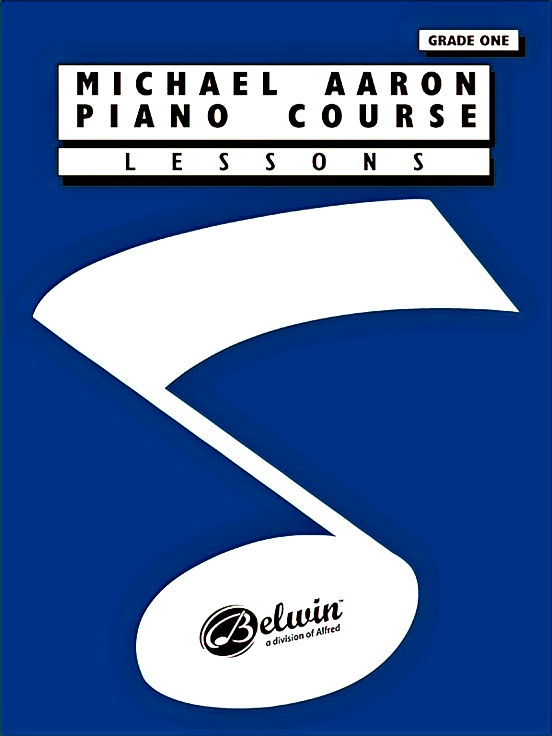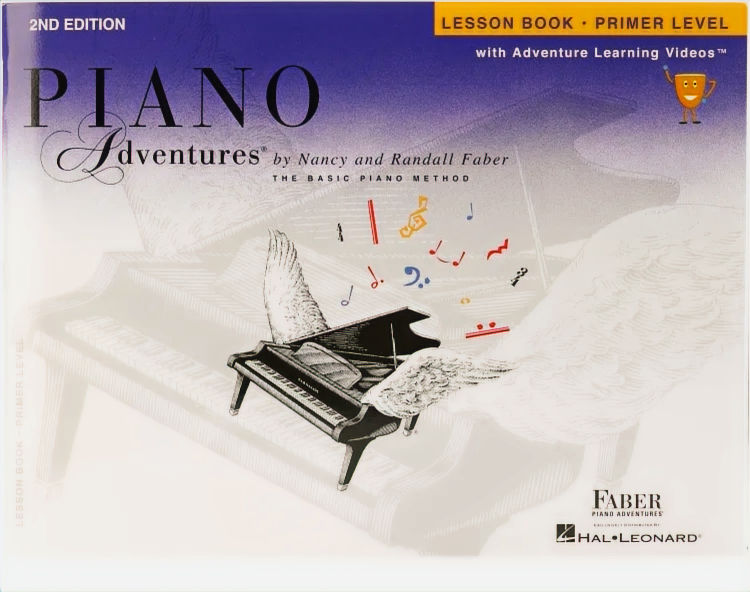The Best Piano Books for Beginning Students: Let's compare a few of my favorites.
- Rosalyn McClore
- Feb 13
- 5 min read
Choosing the right piano method book for a beginner can make all the difference in how a student progresses and stays motivated. Different piano books cater to various learning styles, teacher preferences, and student needs. In this article, I’ll compare four of my favorites and why they are the most popular methodologies for beginning piano students.
Michael Aaron, Bastien, John W. Schaum (often associated with John Thompson and Alfred d’Auberge), and Faber & Faber.
Each method has its strengths and weaknesses, and the best choice depends on factors like age, learning style, and whether a teacher is guiding the student. Let’s take a deep dive into each book and see how they stack up.
1. Michael Aaron Piano Course

Overview:
Michael Aaron’s piano method has been around for decades and was once a standard in many music studios. His books use a traditional, classical approach focusing on technical exercises and sight-reading.
Strengths:
Strong Sight-Reading Foundation – This progressive approach helps students develop strong sight-reading skills from an early stage.
Classical Influence – Many pieces are arrangements of classical works, which is great for students who want a traditional foundation.
Gradual Progression – Concepts are introduced logically, and each lesson builds on the previous one.
Weaknesses:
Can Be Dry – The lack of engaging illustrations or modern elements may not capture younger students' attention. However, guidance from an engaging teacher can easily overcome this.
Limited Creativity – Doesn’t emphasize improvisation or creativity, which some students might find restrictive. I usually address this by presenting additional outside pieces alongside those in the book. For instance, Micheal Aaron will introduce a piece in the key of G major and not put one F# in entire piece. I still haven't figured that one out. So, I search for pieces in the key of G major, and on the same level, that include F# in the composition and bring them to the lesson.
Older Notation Style – The font and layout might feel outdated compared to newer method books. I don't mind this, actually. I often find other books clumsily trying to overcome this traditional style with the page being filled with distracting illustrations.
Best For:
Older beginners or students who prefer a serious, traditional approach.
Teachers who emphasize sight-reading and a more classical straight-forward technique.
2. Bastien Piano Basics

Overview:
Bastien’s books have been widely used in piano studios since the 1970s and are known for their colorful illustrations, simple melodies, and a fast-paced approach to learning notes.
Strengths:
Engaging for Young Students – Colorful pictures, fun songs, and engaging activities make it great for kids.
Fast Note Introduction – Introduces notes and musical concepts at a faster pace than some other books.
Well-Rounded – Incorporates ear training, theory, technique, and performance elements.
Weaknesses:
Can Move Too Quickly – Some students may struggle with the rapid introduction of notes. I like this approach. I believe that the earlier they start seeing notes, the quicker they will perceive it as MUSIC rather than just seeing letters..
Less Focus on Musicality – While great for learning notes, the pieces may feel less expressive than those in Faber or Michael Aaron.
Not Ideal for Older Beginners – The illustrations and design cater mostly to young children.
Best For:
Young beginners (ages 5-8) who need a visually engaging and fast-paced approach.
Teachers who like to introduce notes quickly and keep students moving forward.
3. d’Auberge & Alfred’s Basic Piano Library
Overview:

John W. Schaum and Alfred d’Auberge’s method (often lumped in with Alfred’s Basic Piano Library) takes a middle-ground approach, balancing classical elements with a bit of modern fun. It introduces reading by intervals, basic chords early on, and melodic patterns.
Strengths:
Good Balance of Fun and Structure – Unlike the rigid classical approach of Michael Aaron, d'Aberges' method introduces modern songs while still maintaining structure.
Strong Theory Integration – Theory and technique are integrated into each lesson.
Chords and Hand Position Changes Early – Unlike methods that keep beginners in C position for too long, this method introduces different hand placements early.
Weaknesses:
Somewhat Dated Repertoire – While better than Michael Aaron in terms of engagement, the pieces can feel a bit old-fashioned.
Not As Visually Appealing as Faber or Bastien – Fewer colors and illustrations might not hold younger students’ interest.
May Feel Rigid for Creative Students – Doesn’t emphasize improvisation or creative composition.
Best For:
Older kids (ages 7+) and adults who need a mix of classical and contemporary elements.
Teachers who want a balance between classical fundamentals and modern songs.
4. Faber Piano Adventures
Overview:

The Faber & Faber series is one of the most popular modern piano methods. It emphasizes musicality, expression, and creativity, making it a great option for students who want more than just note-reading.
Strengths:
Engaging Repertoire – Includes original pieces, folk songs, and arrangements that feel expressive and fun to play.
Step-by-Step Pedagogy – Introduces musicality, phrasing, and technique in an accessible way.
Creative Activities – Encourages students to compose, improvise, and understand music holistically.
Great for All Ages – Separate editions for young beginners, older beginners, and adults make it a versatile method.
Weaknesses:
Can Be Slow for Some Students – Unlike Bastien, which introduces notes quickly, Faber takes a gradual approach, which some fast learners may find slow.
Not as Heavy on Sight-Reading Early On – Favors musicality over sight-reading drills in the beginning stages.
Some Pieces Are Unfamiliar – While expressive, some original compositions may not be as instantly recognizable as those in Bastien or d’Auberge.
Best For:
Students of all ages who want an expressive, creative approach to piano.
Teachers who want to balance technical skills with musical artistry.
Final Verdict: Which Piano Book is Best?
Method | Best For | Strengths | Weaknesses |
Michael Aaron | Traditional students, sight-reading focus | Strong classical foundation, gradual learning | Can be dry, older notation style |
Bastien | Young kids (ages 5-8) | Colorful, fun, quick-paced | Moves quickly, less expressive |
d'Auberge / Alfred | Older beginners, classical + modern blend | Good mix of theory, hand positions introduced early | Repertoire can feel outdated |
Faber | Students of all ages, creative learning | Expressive pieces, encourages improvisation | Slower progression, less sight-reading early on |
Final Recommendation:
For young kids (ages 4-8): Bastien is the best choice due to its engaging visuals and fast-paced approach. The primer level is very good for young learners and hasn't failed me yet.
For traditional learners: Michael Aaron is great for sight-reading and a classical foundation.
For older kids or adults: d’Auberge (or Alfred) offers a structured yet engaging approach.
For a well-rounded, expressive method: Faber & Faber is the best for developing musicality and creativity.
Each book has its strengths, and the best choice depends on the student’s learning style and goals set for both teacher and student. Having multiple methods on hand is ideal to tailor lessons to each student’s needs; it's imperative. No one thing ever works for every student. They are all so vastly different in their learning levels, attention spans, general engagement, etc.
What’s your favorite beginner piano book? Let me know in the comments!
Comments